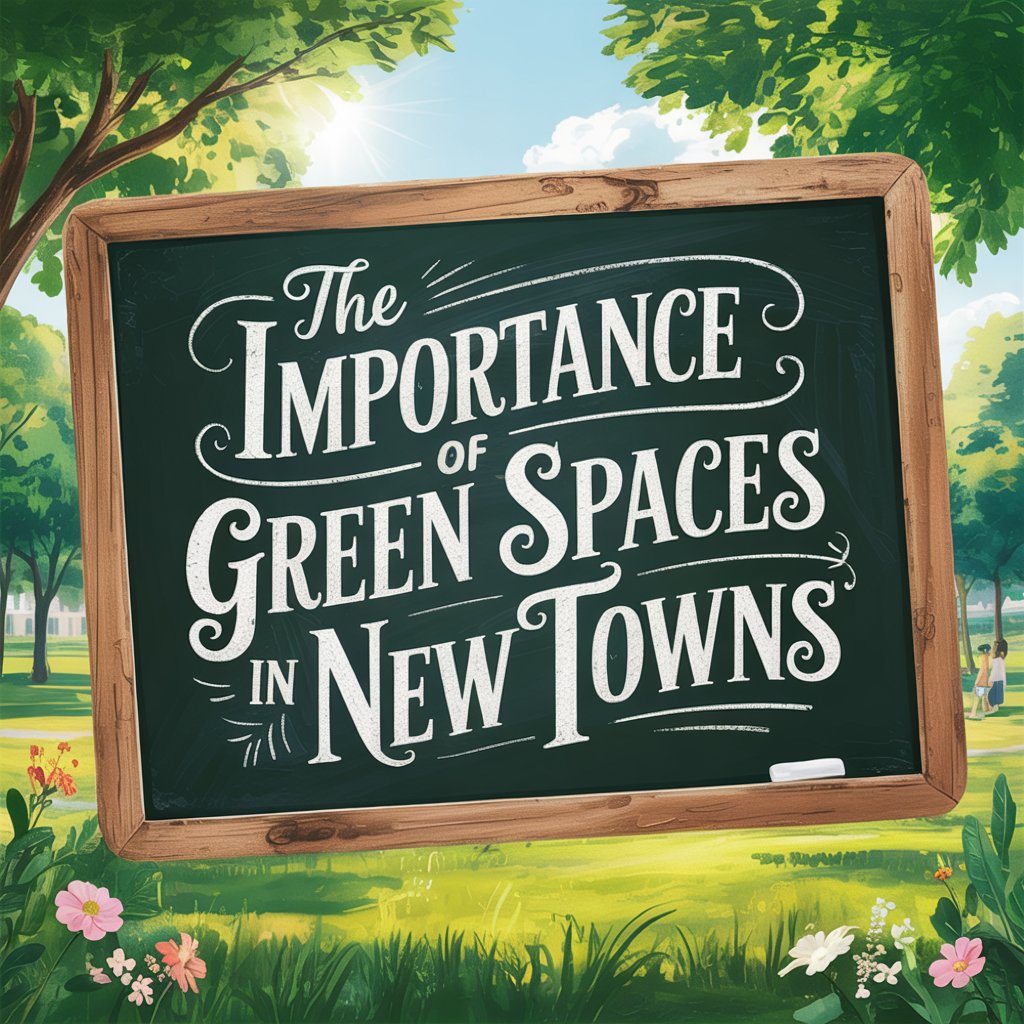The Importance of Green Spaces in New Towns

Did you know that from 2014 around 54% of the world’s population lived in cities? This number is expected to be increased to almost 70% by 2050, with many countries going through periods of fast urban expansion. And Great Britain is no exception. With so many potential projects in the pipeline, we have to concentrate on creating sustainable environments that help support local communities. And one of the best ways to do this is to create more green spaces in new cities.
Domestic gardens, public parks and local forests all offer many advantages, better healthcare and emotional well -being about improved integration and social connection. They also help communities to have the memory by providing a new backdrop for new economic and cultural activities and offering a long -term focus on sustainability efforts. In this article we will examine why green spaces are as important as the planning process works and who is responsible for the fact that there are enough green areas in new cities.
Green spaces’s health benefits in new cities
Urban Green Spaces can offer many advantages for mental health. For example, time in nature can help the residents reduce their stress and fear. It can also help you to cope with depression and other mental illnesses. Urban green areas also offer many physical health benefits. For example, green spaces can offer residents to walk, jog, cycle and other outdoor activities. This can help you improve your physical fitness and reduce your risk of chronic diseases.
It is important to consider that life near green spaces is good for longevity. In 2008 a Lancet study by Dr. Richard Mitchell and Frank Popham of 40 million British a connection between income inequality, access to green spaces and life expectancy. The study showed that in rural areas in which everyone had the same access to green spaces, life expectancy of those on the lowest incomes with those on the highest income. In urban environments in which access to green spaces is more restricted, people’s life expectancy in households with low incomes were 10 years less than those in households with high incomes.
Social advantages of green spaces
Urban Green Spaces can also offer many social advantages. This is because they serve as meeting locations where people interact, participate in events and enjoy joint activities.
They promote casual interactions between local parishioners. For example, they contribute to creating occasional social networks, be it through greeting on a hiking trail, chats on a playground or encounters while going to pedestrians. They also help to strengthen the bonds between families, friends and neighbors. For example, they offer rooms where people can spend time together and create new memories outside the house.
Green rooms can also improve social cohesion. This is because you offer a neutral, integrative environment in which people can combine people of different socio -economic, cultural and age groups – reduce social isolation and promote understanding. They also offer a beautiful environment outdoors for events, cultural activities and festivals – and encourage people to come together for moments of common joy and social harmony.
Economic advantages of green spaces in new cities
Urban Green Spaces can offer local communities economic advantages. Regarding direct
Financial effects, case studies from all over the UK indicate that the proximity to green spaces is positive with both commercial and residential property prices. Real estate overlooks a park that is higher at a value of around 5-7% than at the equivalent properties elsewhere. With regard to indirect financial effects, research has also shown that investments in green spaces can also create other economic possibilities, such as: B. local employment and local tourism.
Environmental advantages of green rooms
Green rooms have many environmental advantages. They help to create a safer, healthier place for people. For example, green spaces help to improve air quality by absorbing pollutants such as carbon dioxide and releasing oxygen, creating a healthier atmosphere. They also help to manage the water quality, absorb rainwater, prevent floods and filter pollutants, which means that clean water sources can be maintained.
Green spaces also support biological diversity. They offer habitats for wild animals and help to maintain local ecosystems. They also act as “wildlife corridors”, combine larger parks in urban rooms and make connections to rural areas on the outskirts. This helps animals, birds and insects to move between individual green rooms, and ensure that there are still safe urban places where wild animals can thrive.
How does the planning process work?
There are a number of organizations involved in the creation of green rooms in new cities. For example, certain organizations such as local planning and government agencies are responsible for the approval of environmental regulations and green space policy. While others are responsible for the approval of land use plans, long -term financial resources and management.
But there are also many other people. For example, some specialists such as master planners, developers, landscape architects and civil engineers are responsible for planning areas and ensure that new green spaces integrate into the local infrastructure. Other specialists such as environmental consultants, ecologists and conservationists are responsible for ensuring that green spaces support local wild animals and ecosystems.
How do master planners contribute to new cities on green rooms?
Master planners like JTP play a crucial role in the design and integration of green spaces in new cities. They set a comprehensive vision for sustainable urban development and ensure that green spaces are an essential part of the city’s layout. They also gradually develop strategies to ensure that green spaces are delivered efficiently and maintained over time over time. The process usually includes a look at:
- Zonation and land use planning- they have areas for parks, gardens, green corridors and other open spaces and at the same time balance living, commercial and industrial needs.
- Connectivity and accessibility, design green spaces that are well networked through paths, bike paths and public transport connections to ensure accessibility.
- Environmentally compatible sustainability-sie include the air-conditioning design, the preservation of biological diversity, sustainable drainage systems and other environmentally friendly elements.
- Health and well -being of the community – they plan green spaces to support mental and physical health by involving leisure areas, playgrounds and municipal gardens.
- Integration into the infrastructure – they align green spaces with rainwater management, cooling strategies and improvements in air quality to improve urban resistance.
As you can see, master planners play an important role in planning and long -term success of green spaces. They help to ensure that green spaces are beautifully designed and at the same time improve the quality of life, sustainability and resilience of new cities.
The future of urban development
Green rooms are an essential part of sustainable urban development and offer a wide range of advantages for health, social, economic and ecological. While our cities continue to grow, we have to ensure that all – including local authorities, master planners, environmental specialists and community groups – work together to develop projects for more sustainable development. We also have to ensure that these projects lead to well -planned green rooms that help our communities thrive.
Ultimately, the investment in Green Spaces is an investment in the future that new cities are worth living, sustainable and adaptable. By recognizing the value of green rooms and integrating into urban planning, we can build new cities that support both the people and the planets in the coming years.





